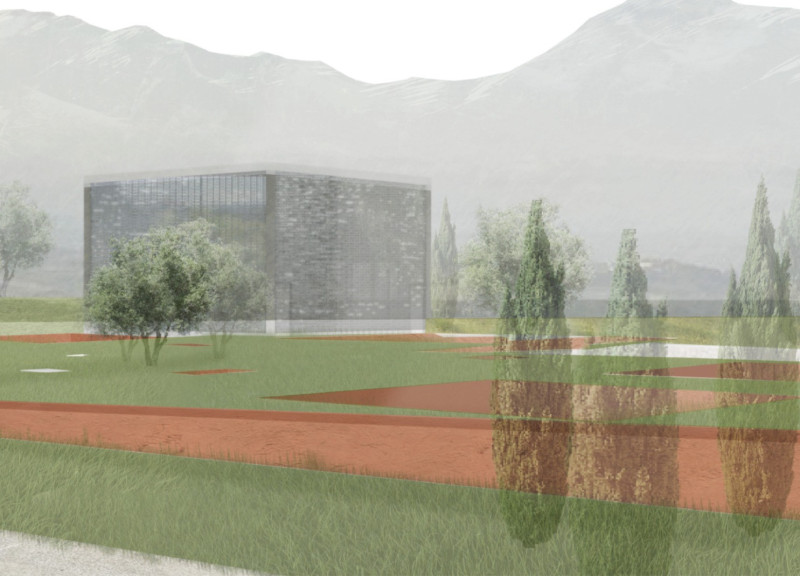5 key facts about this project
The design is located in the scenic region of Umbria, known for its rich traditions in winemaking. It aims to create an engaging experience for visitors while highlighting the importance of wine production in the area. The concept focuses on guiding guests through a series of thoughtfully arranged spaces that culminate in a dedicated area for wine tasting.
Wine Tasting Area
At the heart of the design is the wine tasting area, described as a "jewel case." This above-ground structure features facades made from glass blocks, which blur the line between inside and outside. The use of glass allows natural light to fill the space, creating an inviting environment for tasting wine. Visitors can enjoy views of the surrounding landscape, making the experience more memorable.
Guest Houses
Five identical guest houses are integrated into the design. Each house is equipped with spacious living areas and open kitchens, designed to encourage interaction among guests. Small openings in the architecture allow for natural light and create views of the landscape. The layout prioritizes privacy while also connecting occupants with nature, making the houses a comfortable retreat.
Sustainable Design
The project emphasizes sustainability through its use of underground construction. This approach minimizes disruption to the land, preserving the natural environment. The reception area features a flat vegetated roof, which helps sustain local plant life. This choice reflects an awareness of the ecological impact and respects the historical context of the region's winemaking.
Visitor Experience
The layout of the design is intentional, with a central path that leads visitors from the underground reception to various functional areas. This flow encourages exploration and interaction, emphasizing the communal aspect of winemaking. Key elements, such as outdoor terraces and a natural swimming area, promote relaxation and allow guests to connect with the beauty of the Umbrian landscape.
The reception area, with its vegetated roof, illustrates the thoughtful integration of architecture and nature. It creates a smooth transition for visitors as they move between built spaces and the outdoors, enhancing the overall experience of the environment.


























